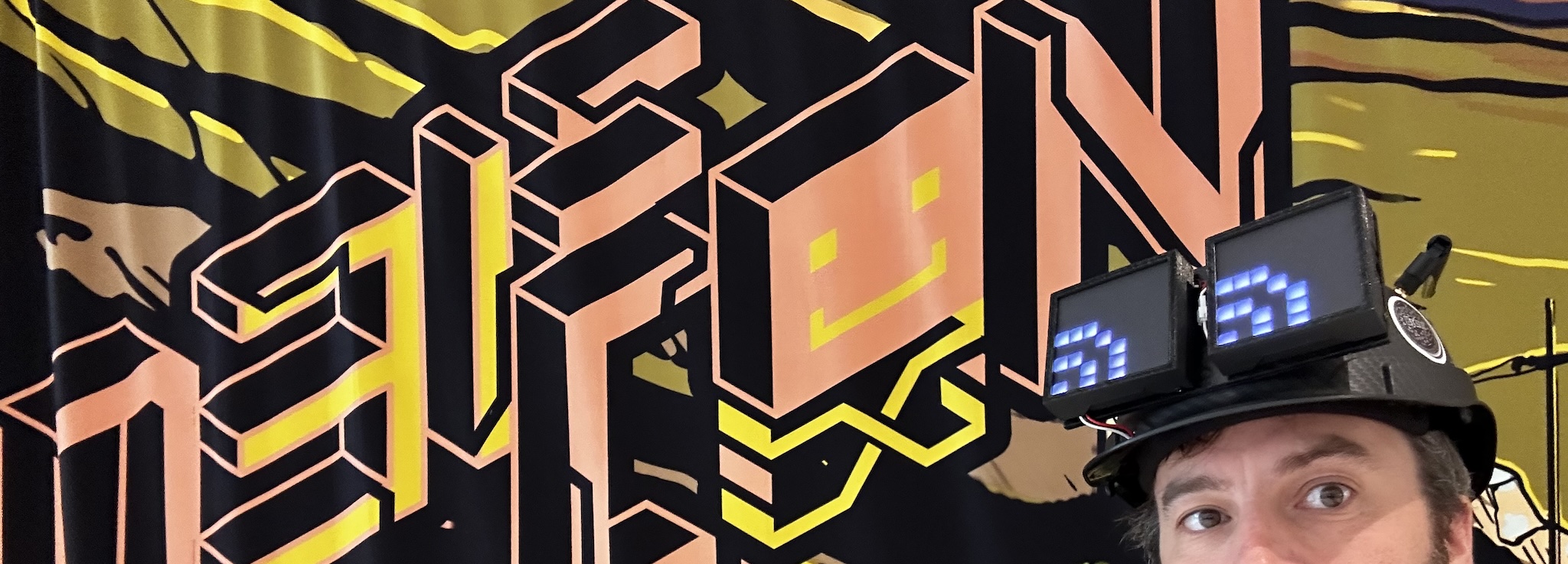If you’ve been to DEFCON over the last couple of years, you have probably seen me. I’m the guy in the hard hat, of which there are a few of us in the Hard Hat Brigade, but I’m the one with big 8-bit eyes on my head.
My first year making a hard hat, after seeing the Hard Hat Brigade walking around the con for a few years, was DC30. That first hat had the eyes, but it was a little weirder with a purple wig with the idea that the hat was sentient and trying to be a bit incognito. I came to DC31 with a more refined version of the hard hat. Black, sleak, but still all about those eyes.
DC32 won’t feature a big change, but I will have some new features, including…glasses!
People have questions about the hat, and I love talking about it to feel free to ask, but I also wanted to put as many of the common questions here on this page for reference.
What does it do?
The hat scans the wifi environment as I walk around using Kismet. Running along side Kismet is a custom Python app that reads the Kismet logs and then processes that data to have the “eyes” react to what is happening on the various wifi channels. For example, if it sees traffic that looks like an exploit or an attack, the eyes might laugh. If there is a spoofing attempt, the eyes might look confused, etc.
Can I see what’s happening on while I wear it?
Yes! The hard hat has a simple web interface where I’m able to see on my phone the current state of the eyes. I’m also able to force the eyes to show a specific emotion, go in to a demo mode, power off, etc.
Why did you make it?
What?! Why wouldn’t I make a hat like this?!
I like technology, I got in to wardriving, but I also love making props and projects that tell a story by doing something rather than just being a static item. This idea with the eyes was so exciting and fun to be as it was beyond just a computer with blinking lights, but a full character with a personality that hopefully entertains people.
What are the parts?
The primary parts are:
- Raspberry Pi 4
- A 5GHz USB wifi adapter (under the hat)
- Two 8x8 LED matrixes, wired up together in serial.
- A USB GPS module.
- A big USB batter that is stored in my backpack (what an upgrade that was!)
- Various 3D printed parts to hold the LED matrixes and the Pi, and now the glasses.
- A hard hat.
Is the software open source?
It could be, but it’s yet. I haven’t shared it because it’s a hacky project, and I’m not a fan of Python so it’s hardly iddomatic. Also, it’s littered with hard-coded configuration. I am working slowly towards maturing it to the point where I can share it, but it’s not there yet.
I’m super tired of reading in these weird hacker colors…is there a video?
Yes! I made a short video on v1 of the hat and it’s over on my C33Tech.com site.

